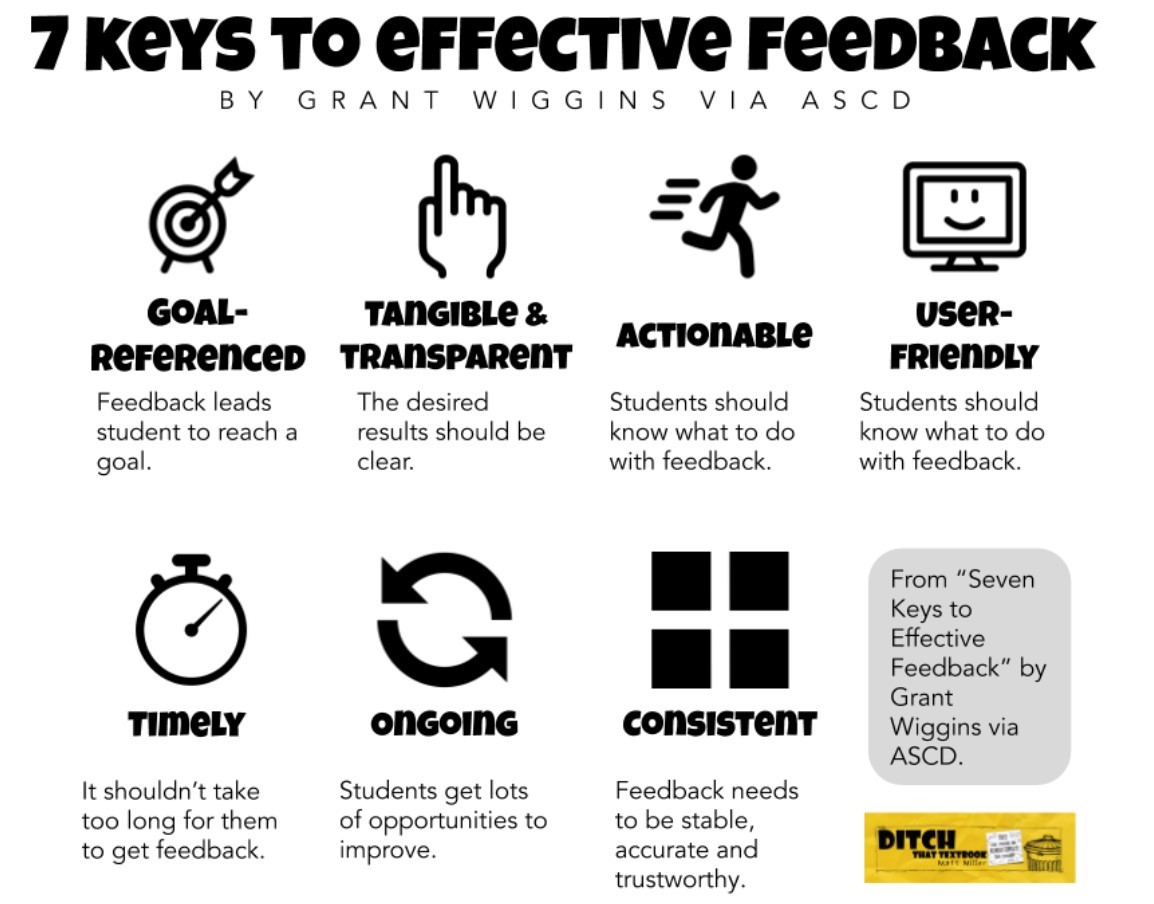How To Offer Effective Feedback To Students? 8 Strategies And Feedback Examples
21st May 2024

The goal of teachers is to support the development of their students. Feedback is an essential instrument that enables us to have a significant influence. Have you ever wondered how to give kids comments that would help them to succeed? Giving students meaningful feedback is about more than simply grades; it's about supporting them as they learn, building their self-esteem, and kindling their curiosity. Read on to learn about some of the best strategies and examples of student feedback that can truly make a difference.
Why Does Feedback Matter?

The influence of feedback in the classroom is enormous. A few reasons why feedback is vital are as follows:
- One of the most crucial intervention strategies instructors use is personalized feedback.
- When teachers provide feedback to their students, they feel more acknowledged. This strengthens the bond between the instructor and the pupil.
- Feedback can be verbal, written, or tactile, allowing you to tailor it to the kids who are most difficult to reach.
- In your classroom, feedback fosters a development mindset culture that improves the atmosphere.
Do you follow us on Social Media? We regularly share upgraded educational content, tips, feedback, and more. Check us out by clicking the profiles here - Facebook / Twitter / LinkedIn / Pinterest / Instagram / YouTube
What Are The Main Types Of Feedback?
Effective feedback can be categorized into 5 types, they are:
- Evaluative
The type of feedback that most managers use the most is evaluative. It provides feedback on behavior or ability in the hopes that the person receiving it will get better.
- Imperative
Clarification is the driving force behind interpretive feedback. When you strive to comprehend a kid better or figure out why they did something, it comes through in the classroom.
- Supportive
Feedback that is encouraging frequently recognizes effort or is just an encouraging activity overall.
- Probing
Feedback of this kind demands more of the person receiving it. Talks may begin with the question, ‘What did you mean...?’
- Understanding
To remedy an activity, you first try to understand why it is happening when you speak for understanding.
10 Strategies For Student Feedback
Take a look at the few examples and strategies for offering feedback to students efficiently:
1. Individualize Feedback
It might seem that the advice to individualize everything you do as a teacher is included in every teaching tip. Being alone might make this seem overwhelming. Giving less input if it means tailoring it to the receiver is worthwhile since customized feedback is more effective.
2. Make It Genuine
When you're not sincere, students can tell. Improve your relationships by providing sincere criticism. You'll be astounded at the channels of communication that open up when you respond to your students' criticism in a real, kind, and helpful manner.
3. Be Timely
When feedback is given, it matters greatly. Giving too much in the heat of the moment runs the risk of embarrassing the pupil. However, you run the risk of missing the chance completely if you wait too long. When they are too far away, the pupil cannot even recall their mental process. Don't allow a lull in your grading to prevent you from providing your pupils with timely feedback.
4. Provide Specific Feedback
Not getting precise feedback might be quite annoying. 'When providing feedback, be precise. Make it clear to the students what they are doing well and where they need to grow. Make use of proof. An issue is easy to resolve after it has been identified. Take into account how much input you provide as well. A lot of the time, too many comments might come across as vague. Try to concentrate on only one thing at a time.
5. Give A Great Student Example
It might be challenging at times to explain why a certain task is flawed. Showing out an excellent student example instead might have a greater impact. In addition to providing a kid with positive reinforcement, you are also providing other students with constructive criticism by setting an example.
6. Offer Check-In Feedback
It's not necessary for one piece of input to completely resolve an issue. Feedback may serve as a progress report on a problem. Start with a simple, open-ended approach. Maintaining the discussion will encourage the learner to ask for assistance when necessary.
7. Recognize Achievement And Effort
You ought to give credit for both work and success. Remember to include a few notes, such as 'I see you've been working very hard on this.' When things are difficult for your kids, this may be the motivation they need.
8. Use The Sandwich Technique
This is a terrific tip to use when giving tough feedback: turn it into a sandwich. The method is straightforward. Begin with a positive, offer constructive criticism, and conclude on a positive note. The sandwich method works well for tense parent emails.
9. Teach Students Peer Feedback
Teach and demonstrate to your pupils how to provide constructive criticism. This will foster a development mentality among your students. Additionally, you'll see that your pupils are providing insightful criticism to one another.
10. Welcome Feedback From Students
Two-way communication is necessary. Permit your pupils to provide you with feedback. Consult with them from time to time on their opinions on assignments, instruction methods, and other topics. Once you have provided constructive feedback strategies as an example, you will be astonished at how constructive your students may be.
Help Students Love Learning With Proper Feedback
In the hands of instructors, effective feedback is like a strong instrument. It supports your pupils' development, self-assurance, and motivation. You help people succeed when we provide them with detailed and supportive feedback. To help understand diverse student needs and cater to each of them individually, enroll yourself in a Certificate in Classroom Management course and gain better insights.
We believe education should be accessible for everyone. That’s why we don’t charge for our blogs. Find the right course that will help you in your career with us, contact us at 1800–212–6400. You can mail us at act@asiancollegeofteachers.com
Written By: Sheetal Sharma